I have written quite a bit since February about the controversial Moses Shapira Dead Sea scrolls–sixteen leather strips containing two copies of the final address of Moses to the children of Israel, delivered in the first person. When Shapira presented his manuscripts to the academic world in 1883-with scholars from Germany, England, and France weighing in–they were eventually declared to be forgeries. They were just “too good to be true.” After all, how could leather manuscripts, hidden in a cave on the east side of the Dead Sea, possibly survive for over two millennia? Shapira died in March 1884–presumably by suicide, and the last owner of the scrolls, Dr. Philip Mason, of Burton-on-Trent, displayed them on March 8 1889 (discovered by Patricia Francis and Matthew Hamilton independently). After that the the trail goes cold. Mason dies, there is nothing in his will about the scrolls, nor that of his wife. No one knows what happened to the originals, though I remain quite confident they will be found. However, we do have fairly complete and accurate transcriptions made in 1883 by competent biblical scholars–Christian David Ginsburg, in behalf of the British Museum and Hermann Guthe and Eduard Meyer of the University of Leipzig.

The “forgery” verdict has remained the consensus, but beginning in the 1950s, when the Dead Sea Scrolls associated with Qumran, on the northwest side of the Dead Sea were discovered and authenticated, it seemed it might be time for a second look. A half dozen scholars since that time have called for a reconsideration. However, the epitaph “Shapira the Forger” seems pretty well written in stone. In 2016 Chanan Tigay published a best-selling book, The Lost Book of Moses: The Hunt for the World’s Oldest Bible, chronicling his own quest, and that of Israeli author and researcher, Yoram Sabo, but without success. Tigay finally joined the consensus and ends his book asserting the “Deuteronomy strips,” as they were called, were indeed forgeries–likely by Shapira himself. Sabo continues his search, convinced that Shapira has been slandered for the past 138 years.
All that changed dramatically earlier this year. Ross Nichols published the complete updated story of the whole Shapira affair titled The Moses Scroll on February 24th, and Professor Idan Dershowitz published an academic study titled The Valediction of Moses: A Proto-Biblical Book precisely two weeks later–on March 10th. Both his book, and an academic journal article, “The Valediction of Moses: New Evidence on the Shapira Deuteronomy Fragments,” summarizing his thesis, can be downloaded free. The book alone has had over 18,000 views since that time, spurred greatly by a lavish feature article in the New York Times, “A Biblical Mystery and a Reporting Odyssey,” also on March 10th, that put the whole Shapira Scroll affair back on the table for not only scholars but millions of readers worldwide.
The irony is that neither Nichols nor Dershowitz knew the other was working on the Shapira materials–and since both have shared information with one another to the great benefit of us all. They both were totally surprised when their books came out in tandem–in February and March of this year!
Since that time, for those of us who have followed the story–including over 150 academics and many thousands of non-specialists–the developments have been dizzying and the discussions pro and con regarding authenticity and forgery heated–though generally quite “civil.” You can review my initial “news roundup” back in March here, and the steady stream of blog posts by Ross Nichols here. Just this week I helped facilitate an English translation of Leuven professor Koert van Bekkum’s well-documented update on developments from Dutch–with both versions posted here.
What few are aware of, both researchers and the interested public, is what really went on “behind the scenes” in Leipzig, Germany the week of June 30th through July 6th, 1883–leading up to the fateful meeting of Moses Shapira with a group of distinguished scholars in Berlin on July 10, hosted by Richard Lepsius, of the Royal Library of Berlin, in his home. The entire “backstory” of Shapira’s time in Germany is now emerging and it makes a decisive difference in our understanding of how and why the German’s concluded that the “Deuteronomy strips” were forged. Ross Nichols begins to tell a tiny bit of that story in chapter 5 of his book, The Moses Scroll, titled “The Germans.” So far as I know, what he brings out has been ignored for the past 138 years–but it is now coming out. You can read it in his book. But there is much more.
What a small group of us are uncovering, based on personal correspondence between Hermann Guthe, Eduard Meyer, and Adolf Erman–who spent a week studying the scroll with Shapira present in Shapira’s room at the Hotel Hauffe in Leipzig–as well as notes, cards, and letters of Lepsius and his associates, makes any modern mystery novel boring in comparison. This material is scattered all over Germany–in Leipzig, Berlin, Breman, Halle, and elsewhere–as well as in Israel. There are letters and notes from Shapira never seen before–as well as from his widowed wife Rosette. Just this week one of our team was in Berlin for two days scanning more materials that we are just now processing. Ross Nichols is just now completing a new book that will be out later this year covering the whole “German” connection to the Shapira story leading up to the fateful July of 1883. It will be based on new archival documents not seen in 138 years.
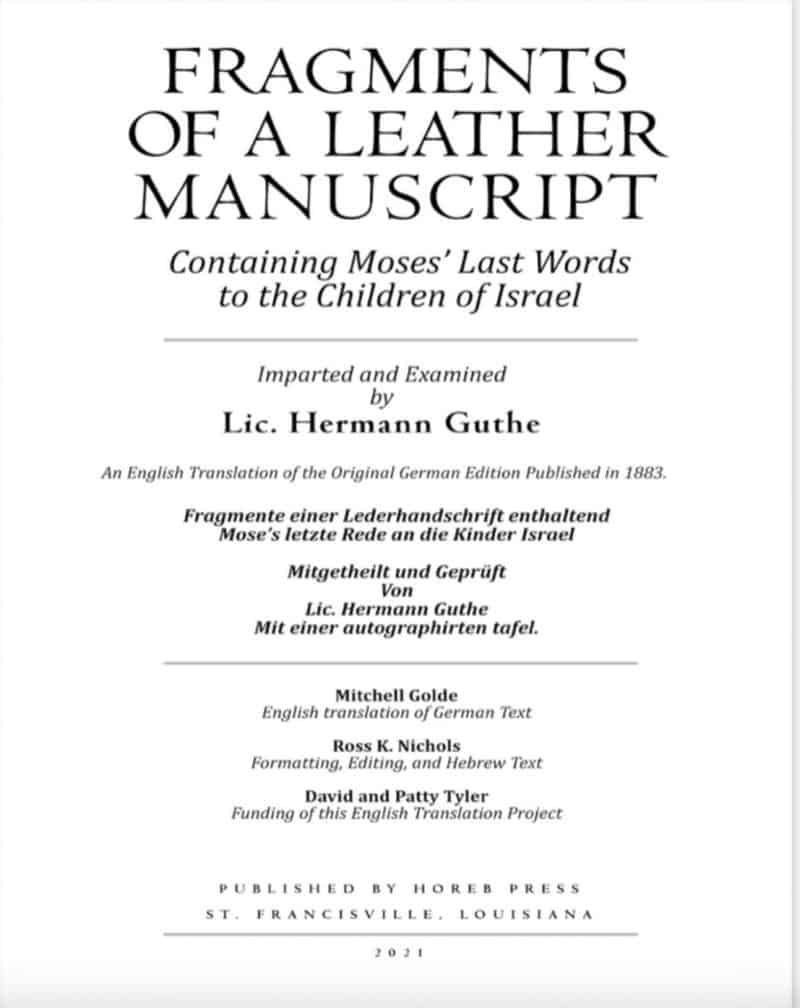
As a kind of prelude to that book, Nichols has just published in English, for the first time, the German publication of Hermann Guthe’s careful study of the manuscripts. It is pretty technical and academic, but those who want to really delve into the story, but are not fluent in German, will want to get it. As he wrote yesterday in his blog:
On 30 June 1883, Moses W. Shapira arrived in Leipzig carrying a curious leather manuscript. The sixteen blackened strips of leather consisted of two copies of an unknown text resembling in some ways the Bible’s Book of Deuteronomy, but with many notable variations.
Shapira checked into the Hotel Hauffe and made his way to the Univerität Leipzig where he informed his friend, the German Semitic scholar Hermann Guthe of his latest antiquarian acquisition. Intrigued by what he heard from his unexpected Jerusalem visitor, Guthe went with Shapira back to the Hotel Hauffe, where, with the strips before his eyes, Shapira described how he came to possess them. Shapira then told Guthe that he desired knowledgeable scholars to examine and decide whether the manuscript strips were truly ancient and authentic as he had come to believe they were. Guthe agreed to carefully examine the strips and enlisted the help of another young scholar named Eduard Meyer to assist him. The two scholars met Shapira at his room in the hotel each day for the next week where they scrutinized every detail of the manuscript strips.
You can read the rest of this post here: “One Week in Leipzig” with the link to download free the translated Guthe manuscript that includes what we think is our most accurate record of the texts of the Shapira Scrolls.
Stay tuned for more to come…
P.S. Here are my Shapira posts so far this year if you want to catch up a bit:
https://jamestabor.com/category/shapira-scrolls/

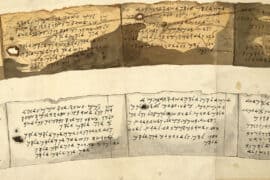

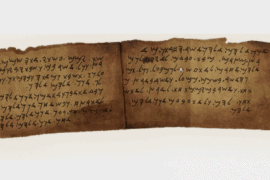
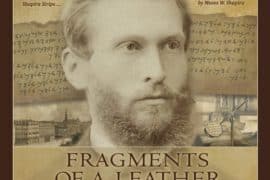
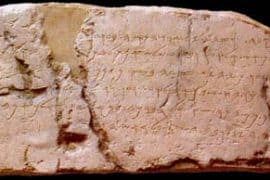


Comments are closed.